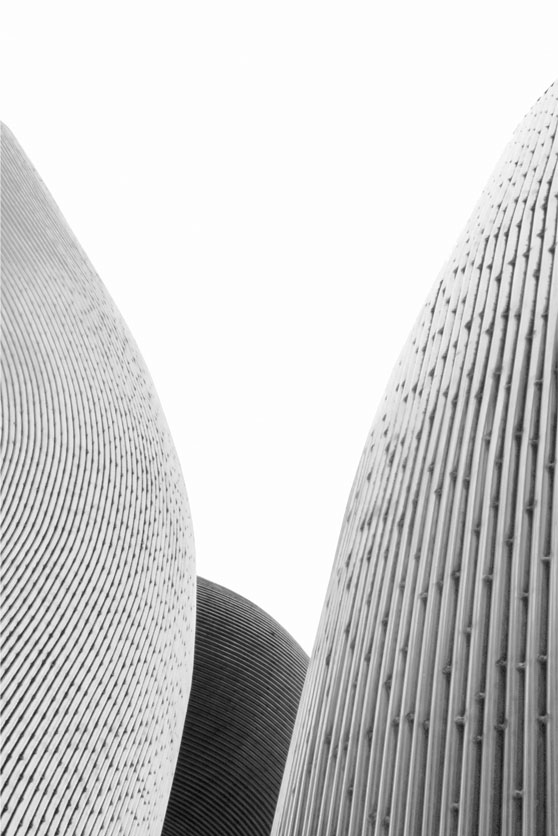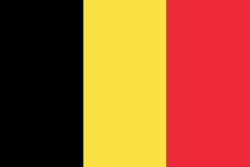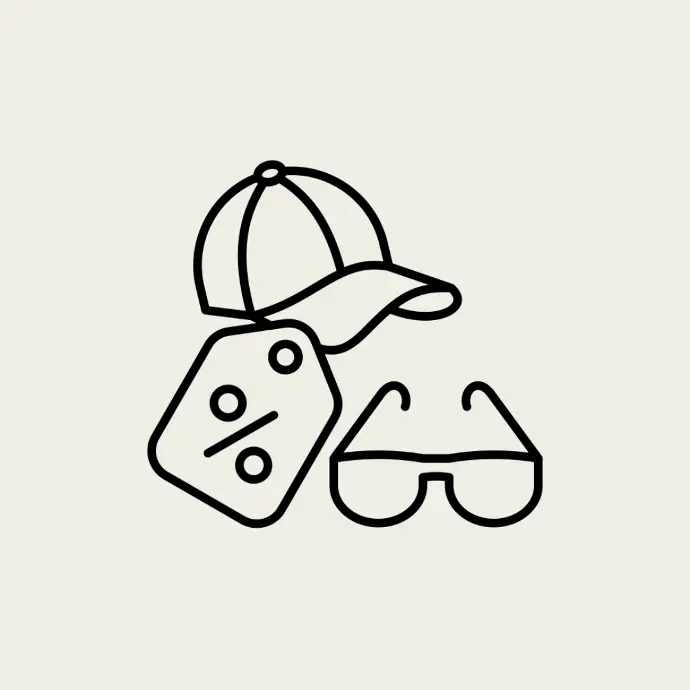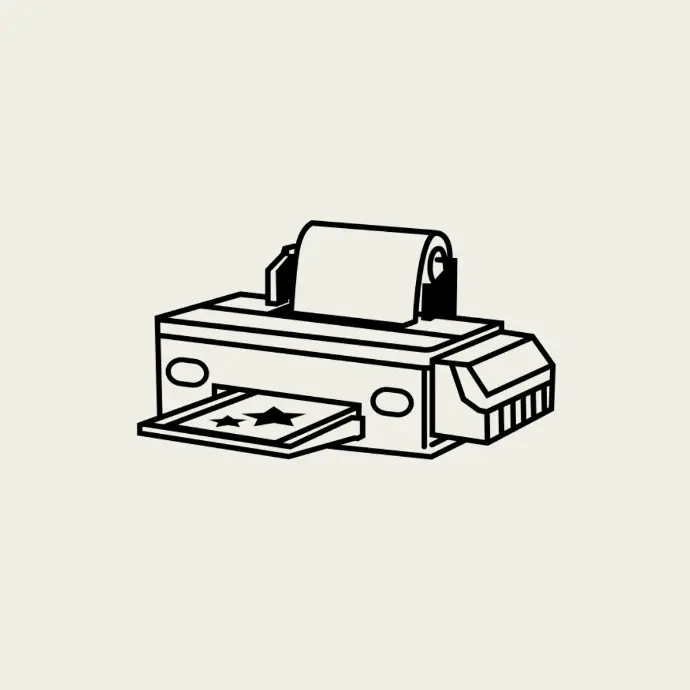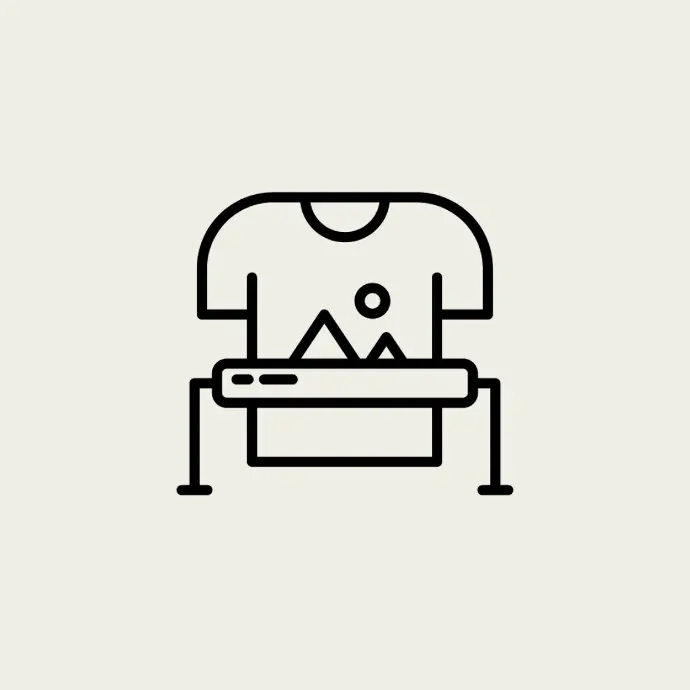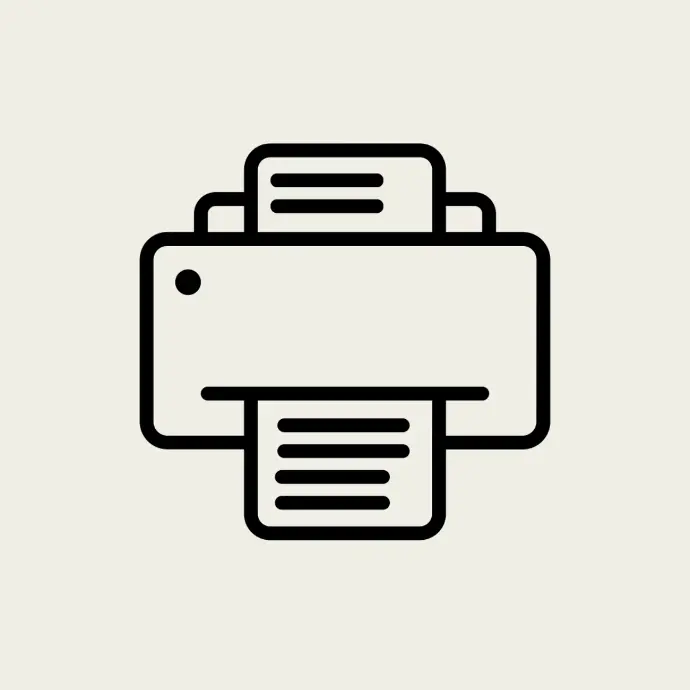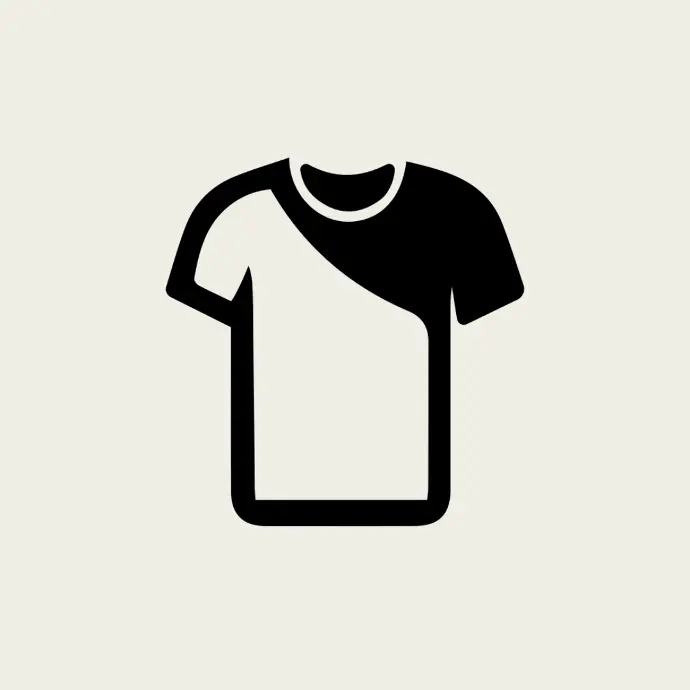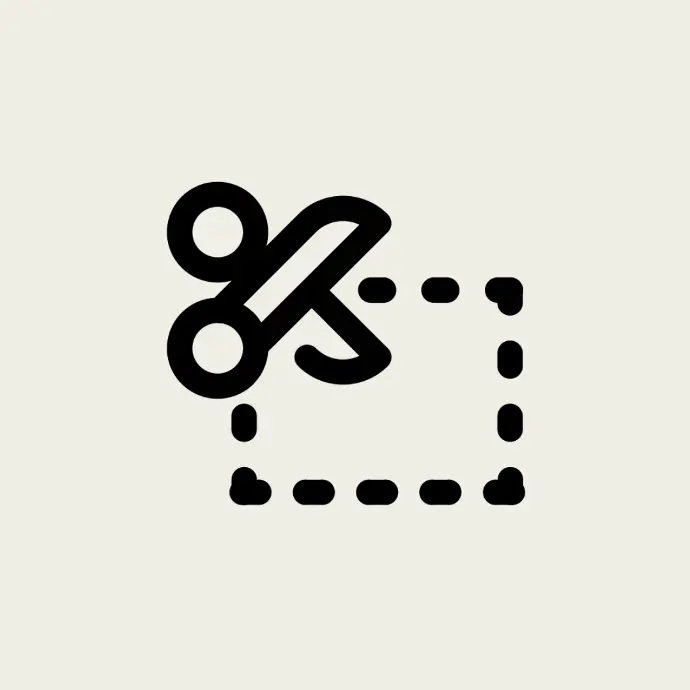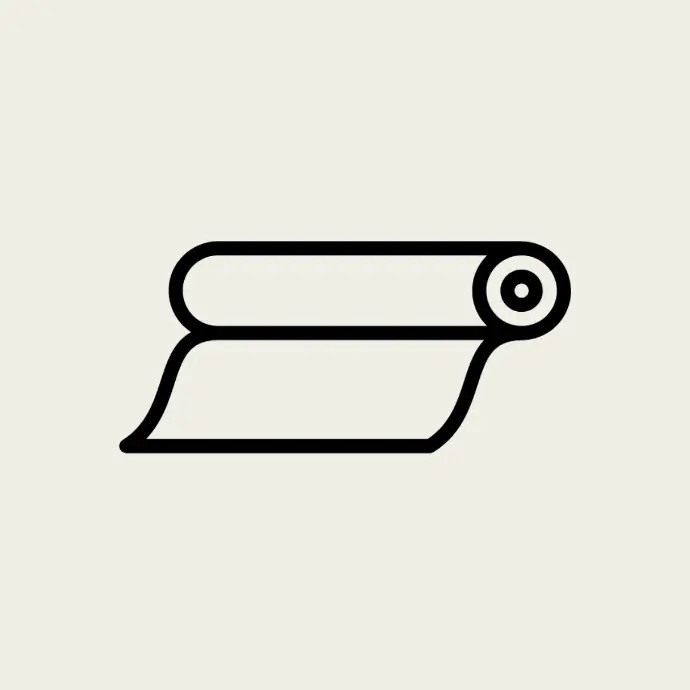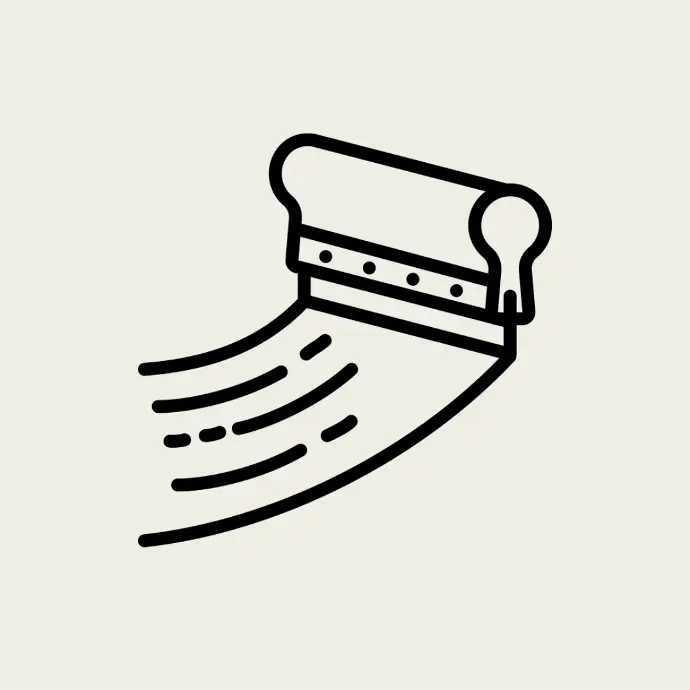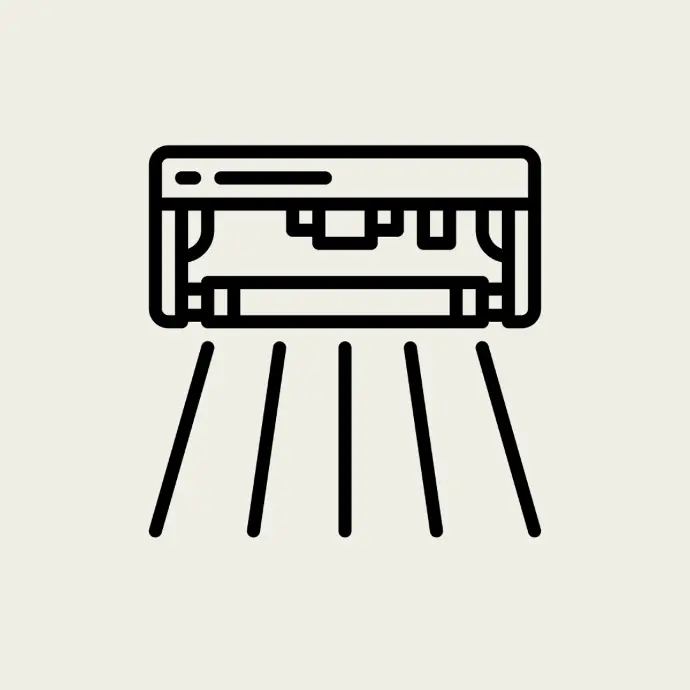Transfer Printing
Bring your designs to life with vibrant precision—transfer printing delivers crisp, full-color graphics on any fabric, making your brand stand out effortlessly.
What is transfer printing ?
Transfer printing is a fascinating and intricate process, involving a variety of techniques and technologies.
This printing method is widely used across different industries, from textile manufacturing to product labeling, offering several advantages over other printing methods.
This printing technique is particularly advantageous for small quantities and challenging textiles, such as work jackets, where other marking methods may struggle.
This versatile technique can be applied using one of the methods outlined below.
Textile
Transfer printing on textiles offers a versatile and precise way to apply designs, making it ideal for a wide range of fabrics, especially those that are difficult to decorate with other methods.
Scroll down to have a look at the different transfer methods.
Direct-To-Film (DTF) printing
What's the process?
1. DTF (Direct-To-Film) printing involves a few key steps. First, the design is digitally printed onto a transparent film using a specialized printer.
2. After printing, a layer of adhesive is applied to the printed side of the film.
3. The next step involves heat-pressing this film onto the fabric, where the combination of heat and pressure transfers the design onto the textile.
Pros | Cons |
Full-Color Capability : DTF printing supports vibrant, full-color designs with fine details, making it ideal for intricate artwork. |
Durability
Concerns :
DTF prints may have limitations in terms of longevity, particularly in how they
withstand repeated washing and wear over time. Proper care and washing
instructions are essential to maintain the print's quality.
|
Small
Quantities :
This technique is well-suited for small runs, as it doesn't require extensive
setup like traditional screen printing.
| Newer Technique : As DTF is a relatively new technique, there is still much to learn and improve in terms of optimizing the process, understanding its limitations, and ensuring consistent quality. |
Design
Storage :
Once printed, the film can be stored and used later, allowing for efficient
production planning and flexibility.
|
Why Choose This Technique?
- Versatility in Products: DTF printing can be used on a wide range of materials, including cotton, polyester, and blends, making it suitable for various products like t-shirts, hoodies, bags, and more.
- Flexible Application: It allows for the same design to be applied in different locations on different items, making it highly versatile for branding and custom orders.
- Fine Details & Color Precision: The ability to produce fine details and full-color designs makes DTF a preferred choice for complex artwork that might be challenging with other techniques.
Direct-To-Garment (DTG) Printing
What's the process?
1. DTG (Direct-To-Garment) printing uses a process similar to a regular printer, but instead of paper, you place a t-shirt (or other fabric) into the printer.
2. The print head then applies the design directly onto the fabric.
3. After printing, the garment is placed in a drying tunnel or heat press to cure the ink, ensuring the design is fixed onto the fabric.
Pros | Cons |
Soft Feel : The print has minimal texture on the fabric, making it comfortable to wear. | Cost : DTG can be more expensive per unit compared to other printing methods, especially for large quantities. |
Full-Color Printing : DTG allows for vibrant, full-color designs with fine details. | Fading : The prints may tend to fade over time with repeated washing, especially if not cared for properly. |
Small Quantities : It’s ideal for printing very small quantities, making it perfect for custom orders or small runs. | |
Detailed Designs : The technique is excellent for achieving fine details in the design. |
Why Choose This Technique?
- Best for Light-colored Fabrics : DTG works particularly well on light-colored textiles, such as t-shirts and tote bags.
- Full-Color with Minimal Feel : It’s an excellent choice when you need full-color printing with a soft feel on the fabric.

Digital Transfer Printing
What's the process?
1. Digital transfer printing involves printing the design onto a sheet of paper.
2. A layer of white ink is then screen printed onto the design, followed by the application of adhesive onto the screen-printed area.
3. The design is then transferred onto the fabric using heat and pressure.
Pros | Cons |
Cost-Effective : This technique is generally less expensive than other printing methods, especially for larger runs. | Larger MOQ : Typically, digital transfer printing requires a larger minimum order quantity, making it less suitable for small batches. |
Vibrant Colors : Digital transfer printing produces bright, vivid colors. | Stiffer Feel : The finished print can have a more rigid, cardboard-like texture compared to other methods. |
Large Minimum Order Quantities (MOQ) : This method is ideal for larger production runs. |

Why Choose This Technique?
- Ideal for Large Quantities : It’s a great choice for large orders, such as producing 5,000 tote bags with a full-color design.
Sublimation Printing
What's the process?
1. Sublimation printing uses special sublimation inks that are printed onto a sheet of paper.
2. This sheet is then placed onto a polyester garment, and heat is applied.
3. The heat causes the ink to evaporate and infuse into the fabric, effectively dyeing the material.
Pros | Cons |
No Texture : The design is fully absorbed into the fabric, leaving no tactile difference on the surface. | Larger MOQ : This technique often requires a larger minimum order quantity, making it better suited for bigger projects. |
Durable Prints : The prints are highly durable, with no risk of fading or cracking, even after multiple washes. | Material Limitation : Sublimation is only effective on white polyester fabrics due to the material's absorption properties. |
Full-Color Designs : Sublimation supports vibrant, full-color designs with excellent detail. |
Why Choose This Technique?
- Ideal for Large Orders: Perfect for producing large quantities of white polyester t-shirts, such as those used for sports events.
Screen Transfer Printing
What's the process?
1. Screen transfer printing involves printing the design onto a sheet using screen printing, which can be done in one or several colors, but not full-color with gradients.
2. After printing, adhesive is applied to the design, and the sheet is then heat-pressed onto the fabric.
Pros | Cons |
Cost-Effective : This technique is generally affordable, making it a good option for budget-conscious projects. | Larger MOQ : A significant minimum order quantity is often required, making it less suitable for small batches. |
Durability : The prints have excellent wash resistance, ensuring longevity even with frequent use. | Design Limitations : The design must have a minimum line thickness of one typographic point (0.03 cm in Illustrator), which can limit very fine details. |
Precision : The method produces sharp, precise designs with clean lines. |
Why Choose This Technique?
- Best for Simple Logos: Ideal for items like work jackets with water-repellent coatings, especially when the logo design is simple in terms of colors.
Flex Printing
1. Flex printing uses a roll of flexible, soft vinyl.
2. The design is created using a plotter, a machine that cuts out the design from the vinyl.
3. After cutting, the unnecessary parts of the vinyl are removed in a process called weeding.
4. The final design is then heat-pressed onto the fabric.

Pros | Cons |
Customization : This technique allows for unique personalizations, such as adding a specific emblem or name to the chest of a garment. | Limited Detail : Fine details are difficult to achieve with this method. |
Color Limitations : Colors must be chosen from available options, and Pantone matching is not possible. |
Why Choose This Technique?
- Perfect for Specific Uses : Ideal for adding custom elements to items like scout uniforms or numbering on football jerseys.
Print & Cut
What's the process?
1. Print & Cut involves using a roll of flexible vinyl, which is first printed with the desired design.
2. A plotter is then used to cut out the detailed shape of the design from the vinyl.
3. After cutting, the unnecessary parts are removed in a process called weeding.
4. The final design is then heat-pressed onto the fabric.
Pros | Cons |
Full-Color Printing: This technique supports vibrant, full-color designs. | Limited Fine Details: The method is not ideal for extremely fine or intricate details. |
Customization: It allows for personalized elements, such as adding unique emblems or logos. |
Why Choose This Technique?
- Best for Medium Quantities: Ideal for producing items like fluorescent jerseys with full-color company logos, especially when the design is less detailed—perfect for runs of around 50 jerseys.
Goodies
Transfer printing on promotional items allows for vibrant and durable branding, ensuring that logos and designs stand out on a variety of surfaces, from mugs to sports gear passing by gardening products.
DTF UV (Direct to Film UV Printing)
What's the process?
1. DTF UV printing is a method where a specific UV ink is printed onto a transparent film.
2. After the ink is applied, a layer of permanent adhesive is added to the print.
3. This prepared film is then transferred onto the desired object, adhering securely to its surface.
Pros | Cons |
Complex and Non-Standard Surfaces: DTF UV printing is highly effective for printing on more complex or irregular surfaces, as well as for items that fall outside of standard formats, it presents as stickers. | Surface Limitations: DTF UV printing is less effective on soft or flexible surfaces, as the print may crack over time. It performs best on rigid or semi-rigid materials, where the printed design can maintain its integrity and durability. |
Small Quantities: This technique is particularly beneficial for smaller production runs, making it cost-effective and versatile for custom or limited-edition items. |
This technique is ideal for projects requiring high-quality prints on unique or challenging surfaces, especially when dealing with small batches or custom designs.
Use Cases:
- Personalized Water Bottles: Ideal for creating one-of-a-kind designs on individual water bottles.
- Printing on Suitcases: Perfect for applying prints to luggage, ensuring a durable and stylish finish.
Sublimation Printing
What's the process?
Sublimation printing involves transferring a design onto an object using heat.
1. The process starts by printing the design onto a special paper.
2. The object, such as a mug, is then heated using a specialized press (e.g., a round press for mugs), which causes the ink to turn into a gas and permanently bond with the surface of the object.
Pros | Cons |
Full-Color Printing: Sublimation allows for vibrant, full-color designs that can cover the entire surface of the object. | |
Suitable for Small to Medium Quantities: This technique is ideal for producing both small and medium-sized batches, offering flexibility for various production needs. | |
Good Wash Resistance: The prints created through sublimation are highly durable, with excellent resistance to washing, making them perfect for items like mugs that need to withstand frequent use. |
Use Cases:
- Customized Mugs: Perfect for creating personalized mugs with vibrant, durable designs that withstand repeated washing.
- Other Items: Suitable for a variety of other items that require high-quality, full-color designs, particularly those that will undergo regular use and washing.
Sublimation printing is an excellent choice for producing colorful, durable designs on a range of objects, especially in small to medium quantities.

Pad Printing
What's the process?
1. Pad printing, also known as tampo printing, involves transferring ink from an engraved plate onto an object using a silicone pad.
2. The process starts with an engraved plate that holds the design, which is then filled with ink.
3. A silicone pad picks up the inked design and transfers it onto the object, ensuring precise application even on curved or irregular surfaces.
Pros | Cons |
Cost-Effective for Large Quantities: Pad printing is highly economical for producing large volumes, making it ideal for mass production. | Limited Color Options: Pad printing is not ideal for full-color designs. Internally, we handle single-color prints, and for more complex designs, we can outsource up to four colors. |
Excellent Durability: The prints are highly resistant and maintain their integrity over time, even on objects that experience frequent use. | Color Limitation in-House: For more than one color, outsourcing is required, which may increase lead time and costs. |
Versatile on Multiple Materials: This technique works well on a variety of materials, including metal, plastic, and more, making it suitable for a wide range of products. | |
Fine Detail Reproduction: Pad printing is capable of reproducing intricate details, ensuring sharp and clear designs. |
Use Cases
- Mass Production of Branded Items: Ideal for producing large quantities of promotional items, such as pens, keychains, and other small merchandise.
- Detailed Logos on Multi-Material Products: Suitable for applying detailed logos on products made from various materials, including metals and plastics, where durability and precision are crucial.
Pad printing is a reliable and cost-effective method for high-volume production, especially when fine detail and durability are required across a range of materials.

Laser Engraving
What's the process?
1. Laser engraving is a technique that uses a laser machine to etch designs onto the surface of an object.
2. The laser removes the top layer of the material, creating a design that is typically less than 1mm deep. This method reveals the underlying color of the material, such as the metal beneath the surface of a bottle.
Pros | Cons |
Excellent Durability: The engraved design is highly resistant to wear and tear, including frequent washing, making it ideal for items like water bottles. | Material Color Impact: The final appearance of the engraving depends on the color of the material underneath the surface (e.g., the metallic base of a bottle), which may not always match the desired aesthetic. |
High-End Appearance: Laser engraving gives a premium, sophisticated look to products, enhancing their perceived value. | Material Limitations: Not all materials are suitable for laser engraving. It works best on solid materials like wood, metal, and certain plastics, but may not be effective on softer or more delicate surfaces. |
Suitable for Medium to Large Quantities: This technique is efficient and cost-effective for producing medium to large volumes, making it ideal for bulk orders. |

Use Cases :
- Engraved Water Bottles: Ideal for creating durable, high-end designs on items like water bottles where the underlying metal adds to the aesthetic.
- Premium Corporate Gifts: Suitable for engraving on high-quality promotional items like metal pens, wooden boxes, and other solid material products where a premium look is desired.
Laser engraving is an excellent choice for creating durable, high-quality designs on solid materials, especially for medium to large production runs where a premium finish is required.
